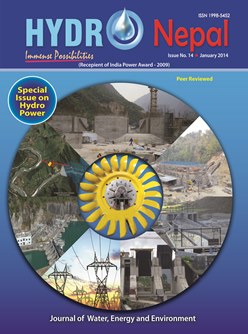Adapting to Peri-urban Water Insecurity Induced by Urbanization and Climate Change
DOI:
https://doi.org/10.3126/hn.v14i0.11259Keywords:
Urbanization, climatic variability, water, impacts, adaptation, NepalAbstract
This paper describes the implications of growing urbanization in combination with climatic variability on water security and adaptation strategies of people in the peri-urban landscape of Kathmandu valley. Through a series of focus group discussions and key informant interviews, we found that entire households at Lubhu, Nepal depend on public stand posts with water supplied for few hours a day. Hydro-meteorological data analysis for the area showed an increasing trend of temperature, but a clear pattern in precipitation was not found. However, people perceived the changes in both precipitation and temperature and impacts on their livelihoods. People have envisioned development of a filtration system to treat water from another source. However currently, they have been fetching water from dug wells and spring sources in neighbouring VDCs during the days without water supply in stand posts. Farmers have been adapting to water scarcity by switching to less water demanding crops, by leaving land fallow, and by taking on off-farm activities. The concern for sustainable water management is growing among the community, however. Strong dedication and unity among the communities is essential to ensure the water security in the village.
DOI: http://dx.doi.org/10.3126/hn.v14i0.11259
HYDRO Nepal Journal
Journal of Water, Energy and Environment
Volume: 14, 2014, January
Page: 43-48
Downloads
Downloads
Published
How to Cite
Issue
Section
License
The copyright of the articles and papers published is held by HYDRO Nepal Journal.
The views and interpretation in this journal are those of author(s), and HYDRO Nepal does not bear any responsibility for the views expressed by authors in the journal.




